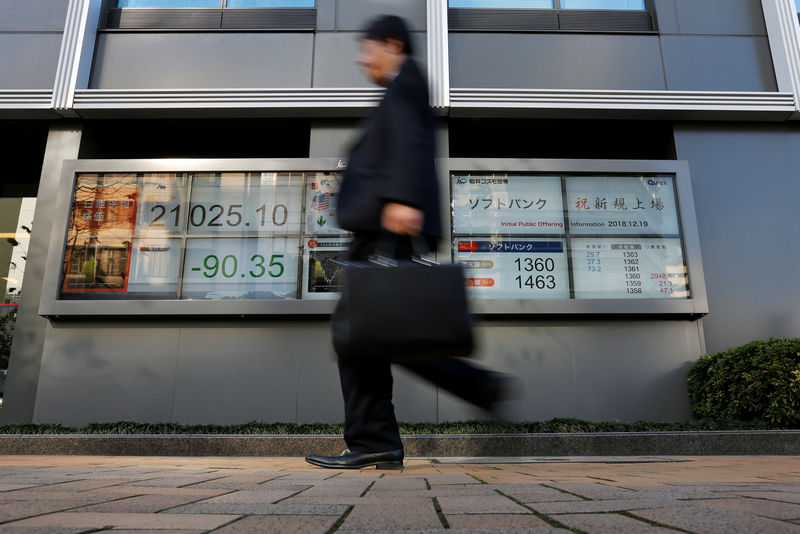By Trevor Hunnicutt
NEW YORK (Reuters) - Investors gravitated to safe-haven assets on Friday as worries about the world economy persisted, cutting short a two-day rebound in U.S. stocks.
U.S. stocks see-sawed, making it difficult for world equity indexes to end one of the most brutal December selloffs in memory on a high note.
"Markets will likely remain treacherous in the New Year," Marc Chandler at Bannockburn securities told clients.
After fluctuating most of the morning, at midday the Dow Jones Industrial Average (DJI) rose 43.89 points, or 0.19 percent, to 23,182.71, the S&P 500 (SPX) gained 6.85 points, or 0.28 percent, to 2,495.68 and the Nasdaq Composite (IXIC) added 21.03 points, or 0.32 percent, to 6,600.53. (N)
The pan-European FTSEurofirst 300 index (FTEU3) rose 1.85 percent (EU) and MSCI's gauge of stocks across the globe (MIWD00000PUS) gained 0.58 percent to bring the global benchmark to a weekly gain over 1 percent.
Markets have swung wildly in a week shortened by the Christmas holiday. But even a late Santa Claus rally will do little to salve the 8 percent declines for the MSCI index this month and a year that brought gains for very few categories of financial assets, from stocks to bonds and commodities.
For graphic on Global markets in 2018, click https://tmsnrt.rs/2R8CUd7
The dollar index (DXY) fell 0.1 percent, with the euro (EUR=) up 0.1 percent to $1.1441 and Japanese yen
That has boosted gold, a traditional safe haven whose appeal this year was hit by a stronger dollar, which makes the metal more expensive to buyers with other currencies. The metal
The steady drum beat of disappointing economic data has continued to reinforce caution, with Japan's industrial output contracting in November and retail sales showing sharply.
In Europe, German annual inflation slowed sharply in December, while in the United States, National Association of Realtors data showed contracts to buy previously owned homes fell unexpectedly in November, the latest sign of weakness in the U.S. housing market.
Chris Bailey, a strategist at brokerage Raymond James, said dollar weakness was good news for non-U.S. assets.
"My feeling is... if we get the transmission mechanism of a lower dollar, stocks outside the U.S. are set up for a good 2019," Bailey said. "Once people get their heads around the fact the U.S. is not going to have yet another double-digit return year in 2019, you can look elsewhere."
That would be a relief to world markets that largely underperformed the United States in 2018.
U.S. Treasuries did not see a huge flight-to-safety move. Bonds have been helped in recent weeks by risk aversion, but also face a glut of supply as the U.S. government finances its growing deficit.
Short and medium-term bonds were little changed on Friday. The 30-year Treasury bond (US30YT=RR) last fell 6/32 in price to yield 3.0383 percent, from 3.029 percent late on Thursday. [US/]
U.S. crude oil futures
Brent crude (LCOc1) futures fell 3 cents to $52.13 a barrel, a 0.1 percent loss, by 12:28 p.m. EST (1728 GMT). U.S. West Texas Intermediate (WTI) crude (CLc1) futures rose 54 cents to $45.15 a barrel, a 1.2 percent gain.[O/R]
In Italy, 10-year yields (IT10YT=RR) are set for their biggest monthly drop since July 2015. In the last auction of the year, investors were willing to buy 10-year government bonds at 2.70 percent, down from 3.24 percent last month.

The auction could be a sign Italy has turned a corner after months of consternation over fractious talks on its spending plans with the European Union.